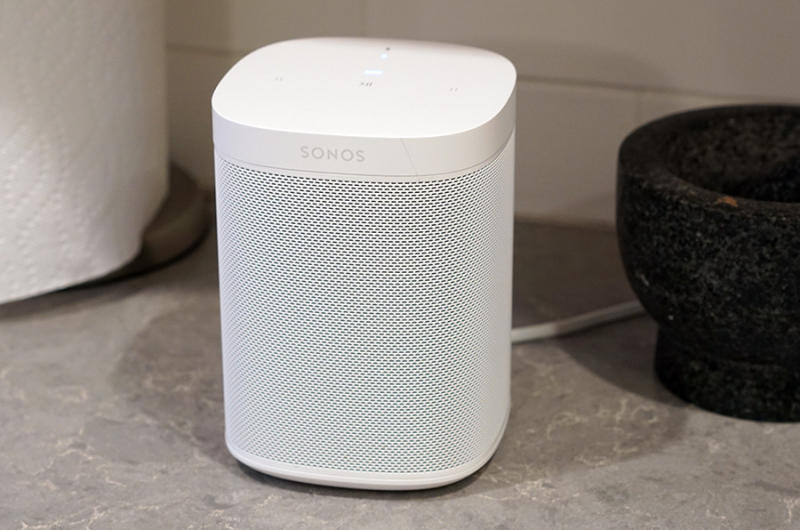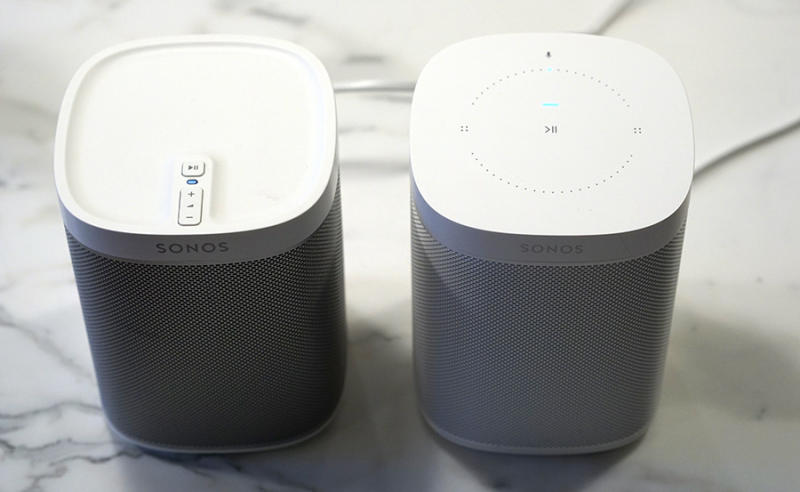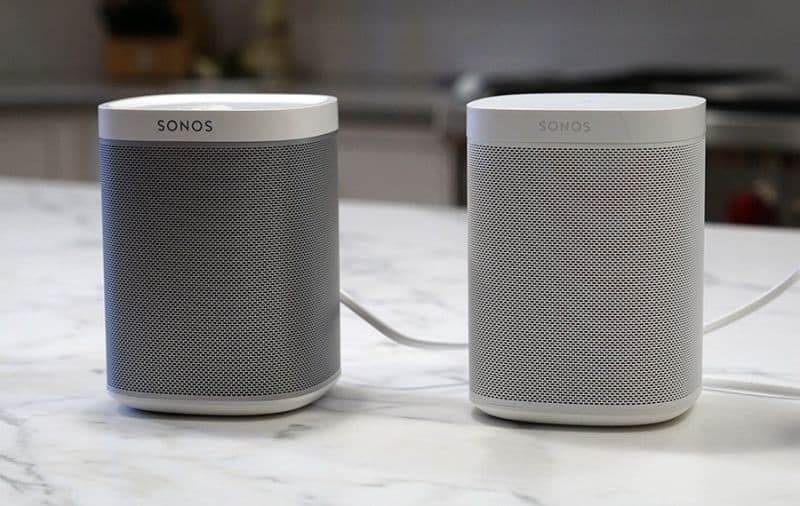If you’re among the millions who own Sonos speakers, then you don’t need a paragraph explaining how great they are (the speakers, not the owners).
A Sonos is an internet-connected speaker. It can deliver music from 50 music sources (Spotify, Pandora, Amazon, Apple, Google, etc.)—and you control it from an app on your phone or computer.
These speakers sound amazing for their size and cost. They’re entirely wireless, and they’re easy to name and group—Kitchen, Living Room, etc. In other words, they let you create a whole-home audio system for a fraction of what a professional installation would cost.

Well, fine—until the Amazon Echo came out. The Echo sounds flat and tinny compared to a Sonos speaker, but it overtook Sonos in sales last year (5 million sold vs. 4 million) for one key reason: The Echo lets you ask for music by voice. “Alexa: Play ‘The White Album.’” “Alexa, play some cooking music.” “Alexa—play ‘Mr. Blue Sky.’”
This is what’s known as a killer app, people. It feels like “Star Trek,” like “The Jetsons,” like magic. You come home, you throw your keys in the bowl, you say, “Play some classical music,” and there it is.
But over on Planet Sonos, people still had to haul out their phones to start music, stop music, change tracks, or change the volume. I realize how first-worldly that sounds, but trust me: Sonos owners looked with longing over the fence at their Echo-owning neighbors.
People came up with all kinds of hacks to connect an Alexa to a Sonos (buying a Dot and using a wire, for example)—but in general, this was a missed opportunity the size of Texas.
The end of the era of suffering
Well, it took Sonos some time, but I’m happy—really happy—to report that it has finally come to its senses. The Sonos:1 ($200) speaker looks, sounds, and costs the same as its predecessor, the Sonos Play:1. (Who comes up with these confusing names—someone from Microsoft?)

There are two tiny differences: The new speaker doesn’t have a mounting bracket on the back, and its top buttons are touch-sensitive spots instead of physical switches.

And there’s one huge difference: the new speaker is an Amazon Echo. It has Alexa built in. So you can ask it for the time in Paris, for a 20-minute timer, for a joke, for last night’s sports results, for an NPR news update, for an Uber ride, for a Domino’s pizza, to set your Nest thermostat, and so on—and you can ask it to play any music in the world. (See my video above.)
But meanwhile, it’s a Sonos. So now you can not only ask, “Play Billy Joel”; you can say, “Play Billy Joel in the living room.” Or, “in the kitchen.” Or wherever you’ve set up your Sonoses.
You don’t have to replace your existing Sonos setup, either. Just one Sonos One speaker (with Alexa) can control all your older Sonos speakers (without Alexa).
That’s the review, right there. It’s Alexa smarts in a Sonos. If you’re a Sonos fan—or if you’re trying to come up with a killer big-ticket holiday gift for the music nut in your life—you have my blessing. Get this thing.
However…
It gets better
Ah, but Sonos did more than just put Alexa into a Sonos speaker. It also wrote a “skill”—a plug-in voice command—for existing Sonos speakers.
Yes, the days of wiring an Echo Dot into a Sonos speaker are over. If, indeed, you own both an Amazon Echo (any kind) and a Sonos speaker (any kind), you can have all the same voice control that you’d get if you bought a Sonos One (the new kind).
That sounds trickier in words than it is in practice. But here’s the idea:

In other words, you don’t have to buy anything new from Sonos to get voice control over an existing Sonsos setup. If you have an Amazon Echo (or if you buy an Echo Dot this Black Friday for $30 or $40)—you can enter the same musical heaven.
You’ll probably have the same critique I do: The software setup has too many steps, with too little guidance. But you’ll muddle through.
A thrilling next few weeks
Voice-controlled speakers are a hot new item this year. It’s a great idea for a tech product (have I mentioned how great it is to own one?), and lots and lots of people will be buying them.
In December, Apple (AAPL) and Google (GOOG, GOOGL) will each enter the marketplace with bigger, badder, much more expensive voice-controlled speakers of their own. There’ll be the Apple HomePod ($350) and the Google Home Max ($400).
In other words, Sonos’ window of being The One and Only is fairly short. Soon, it will be surrounded by competitors.
Sonos enjoys the freedom, though, of being beholden to no particular ecosystem. If you buy an Apple HomePod, you’ll use “Hey Siri” commands to operate it; it’s great, if you belong to the Apple Army. If you buy a Google Home Max, you’ll use “Hey Google” commands; great, if you belong to the Android Army.
But after an update coming in the new year, the Sonos One will be able to respond either to “Alexa” commands or to “OK Google” commands—a feat I’ve never seen in a single piece of hardware.
(Speaking of updates: At this moment, there’s one important music service you can’t control by voice on the Sonos One—Spotify. The company says that’ll come within the next few weeks.)
The bottom line, though, is that the Sonos One (and the free “skill” for older Sonoses) is the harbinger of a glorious new era. Most people are fairly “meh” about most smart-home products—you don’t see internet-connected light bulbs, door locks, or electric drapes in many people’s houses. But voice-controlled music? That’s got mass appeal. That’s true joy. Mark my words: It’s going to become a thing. A really wonderful thing.

